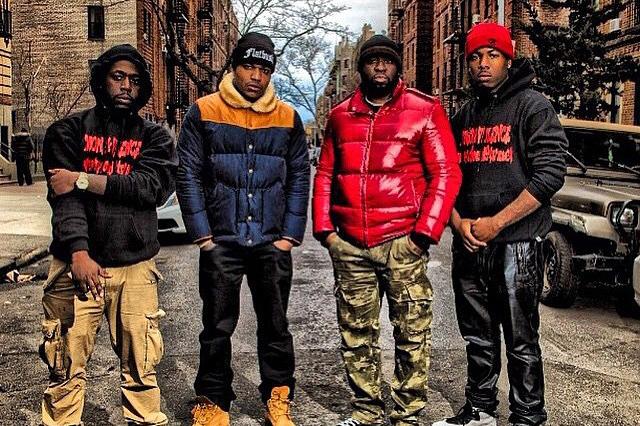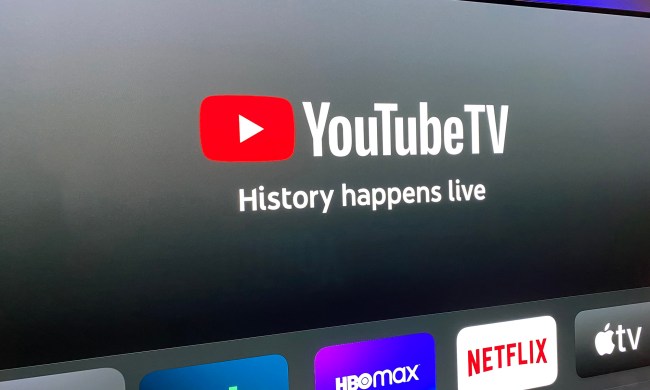
Moise Verneau, born and bred in Brooklyn, NY, wanted to capture the streets he grew up on and how they’ve changed. So with little more than a $2,500 camera, he started the YouTube channel Cloud9TV and began filming Money and Violence. People quickly tuned in. Since its debut in August 2014, the show has been viewed more than 13 million times on YouTube, and its popularity grows by the day. It’s been so successful in fact that there is talk of a future on network or cable, or a subscription service like Netflix. The show was even featured in a Fox News special.
“I didn’t want Money and Violence to be another hood project.”
Money and Violence is set mostly in the borough’s Flatbush section; it follows an ensemble cast of real New Yorkers with little to no acting experience trying to survive the street life. A central story connects the diverse cast of characters in an on-going war between Rafe’s righthand man Miz and a gang of Jamaican gunmen — after Miz murders one of their associates.
With its intricate, interconnecting plot lines, Money and Violence’s closest relative may be David Simon’s epochal The Wire series. Speaking with Digital Trends, Verneau acknowledges the comparison but said his series has a different goal.

“I didn’t want Money and Violence to be another hood project. Didn’t want it to be another State Property, another Belly. I wanted it to be something different,” he told us. “In The Wire, the characters were basically fighting for power. They wanted to gain control of the blocks. They wanted to gain control of Baltimore. Whereas with Money and Violence the characters are just fighting for survival. If these guys didn’t have to do this they wouldn’t.”
“The original plan with Money and Violence was to fight the long trek. To go the long haul with it. We prepared ourselves to do it on our own. Money and Violence was created for more than entertainment. It was a message we were trying to put out there. If you watch Money and Violence, you see the underlying message. The realities of the street.”
Bringing “old Brooklyn” to a new generation
The main character, Rafe, played by Verneau, is the embodiment of the show’s moral duality. Rafe is a well-spoken thief who will go through anyone to leave a heist with his freedom, but will inform someone attempting to contract him to rob their cousin of the grave consequences. Verneau says the show is meant to educate the viewing audience on “old Brooklyn,” a time before Lena Dunham pretended it was all Bushwick and Williamsburg brownstones — a time when people broke up teenage brawls in McDonald’s instead of globally broadcasting them from cell phone videos.
Verneau calls this generation the “Generation of Facade.” Millions of people artificially creating a life through carefully chosen Instagram pictures and Facebook posts. People who value perception over principle. In one episode, Rafe and Miz confront the younger member of their heist team, Kane after they catch him taking Instagram pictures with money they stole.
“It’s not about survival anymore. Now it’s about being seen,” said Verneau. “My generation grew up just trying to put food on the table. Just trying to eat. Like, bruh, I really didn’t have an option, so I’m going to sell drugs. But now selling drugs has become cool …. You got a lot of dudes who ain’t been through nothing and the second they get some money they buy the lifestyle. You never carried a gun in your life but as soon as you get some money you want to carry a gun. What is that? Your life is no longer in danger so why are you doing that? ”
Verneau had never filmed or edited anything before, so the “old Brooklyn” native learned the new-fashioned way: YouTube tutorials and studying his favorite films. As a result, the heavy focus on dialogue and conveying emotion through tight camera shots was a product of the experimentation necessary for first time filmmakers. He shot all 24 episodes of Money and Violence on one $2,500 Canon 5D Mark III with a 24-105mm lens and edited with Adobe Premier Pro CS6.
“That lens helps them look more cinematic than with wider shots, unless you’re using depth of field,” Verneau explained. “Wide shots with this lens…you’re basically shooting with a camcorder.”
Next page: Making a show on YouTube, and a possible network TV deal
YouTube: The New TV Network
Taking a YouTube series to network TV is not always the easiest transition. Abbi Jacobson and Ilana Glazer’s 2010 YouTube series Broad City was picked up by Comedy Central in 2013 after Amy Poehler came on board as executive producer. But according to Comedy Central’s president of original programming Kent Alterman, who spoke with Grantland recently, “when they came to us they had a script, and that script needed work.” Alterman explained the young writers’ lack of experience with network television scriptwriting was compensated by their “organic, very innate, primal dynamic.”
Money and Violence has the same draw: It’s so unpolished that it feels real in some ways. The annual Labor Day Parade festivities in the Eastern Parkway section of Brooklyn occurred on September 1, 2014 and were included in episode five the very next day. “I think the people are able to connect a little more and it makes them feel like it’s real,” Verenau said. “Like ‘wow, we were just at Labor Day Parade yesterday and I’m watching it today.’“
This dynamic between authenticity and technology pervades even the show’s ending credits, which feature Twitter handles for the cast instead of actual names.

“You have to understand that a lot of us … not that the cops are looking for certain people but we’re not really good with putting our government out there,” Verneau explained. “We’re still making the transition. It’s more habit than anything.”
Sometimes that blending of art and reality can blur the dynamic between spectator and creator. Without millions of promotional dollars from a television network, the success of a Web series comes down to how invested their online fan base is in what they’re doing. Fans have helped revive cult classics and helped millionaires fund passion projects.
“It’s just crazy to me that if you kill one person, you’re a madman, but if you kill a million people you’re great. You’re a genius.”
“[Fans] have given us all of this love and it’s basically a loan,” says Verneau. “It’s basically like me coming to someone and saying ‘Look I have something, it can be great,’ and then investing.” Often times, fandom of a show can border on entitlement to the creator’s life, a truth Vernaeu witnessed firsthand when he had to postpone release of the second part of season one’s finale due to a death in the family.
“My mother died a week and a half ago,” he told us in February. “That’s the crazy thing. I didn’t put it out there because I’m a private person, so I just put a member of the family of a cast member had passed. It’s just crazy to me how people are like ‘you need to put it out, it’s been three weeks.’ I’m trying to do this.”
Verneau said he and his cast are ready to avoid television and do it independently in order to keep the show’s authenticity, but truckloads of YouTube money aren’t rolling in yet.
“For me to give it to a network and for Money and Violence not to keep its essence it would not be Money and Violence,” he explained. “People are so focused on the title and it’s so crazy to me. It seems like you got to focus on the title Money and Violence but money and violence is the whole theory of America. [Laughs]. It’s just crazy to me that if you kill one person, you’re a madman, but if you kill a million people you’re great. You’re a genius.”
Even if the essence of Money and Violence isn’t altered by a network, the YouTube darling would have to change the way it is written and shot. On network television, series episodes are written, filmed, and edited months before they are released, and the network usually gives notes on changes to the script. As evidenced by shows like episode five — which included the Labor Day Parade and aired a day after it —Money and Violence is a bit freer.
“My generation grew up just trying to put food on the table. Just trying to eat.”
“If I have free time today and there is no inspiration, I’m not going to force it,” Verneau said. “My best stuff may come to me in the shower or on the toilet [Laughs].”
For a TV industry that has celebrated meth dealers and male prostitutes in the last five years, Money and Violence is relatively tame. There were 31 gunshots and six people murdered within the first 16 episodes of the Web series. In comparison, NBC’s hit drama The Blacklist’s post-Super Bowl episode consisted of three men shot to death, one set on fire, an extortion attempt, and 21 gunshots fired in the first 11 minutes. If TV is a mirror of the society it draws its inspiration from, then network television proves Money and Violence is as American as cannibals and presidential mistresses.
The unclear road ahead
Whether on a TV network or YouTube, Verneau promises season 2 will include improved production and better acting when it debuts this summer, though that’s only a tentative timeframe. The entire cast is taking acting classes before they begin shooting. Verneau is also “open to sprinkling some seasoned actors who don’t have established faces.”
“The public has given me all of this attention and all of this love. So therefore, because of that, in return, I want to give them the best project possible. I owe them that.”
The cast should also expect a bevy of new fans once season two premieres. Money and Violence fever has not stopped since season one ended on February 18. The final part of the first season finale attracted 235,178 YouTube views in its first nine days. In the month since its release, the final part of the finale has experienced a 60 percent increase in views and has become the 10th single video stream of the series to amass over 370,000 views.
Whether it’s on your TV, laptop, or phone, thanks to Money and Violence we expect old Brooklyn may reign again.
You can check out the first season of Money and Violence on YouTube.



